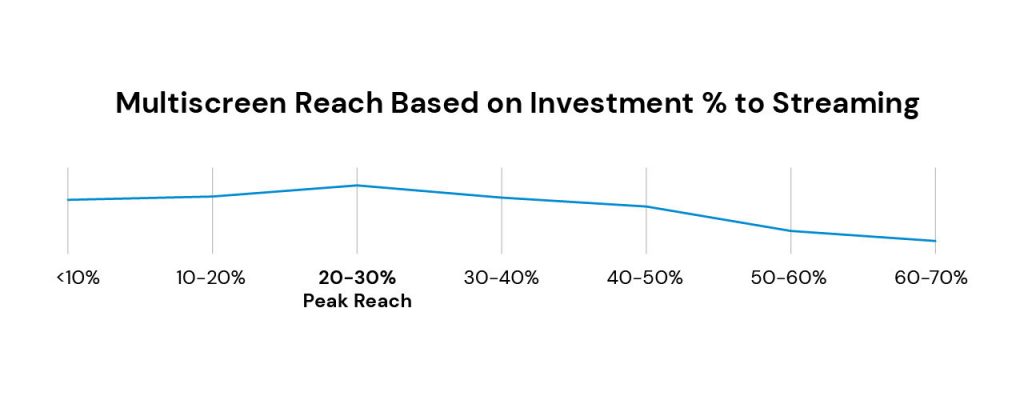
Get to Know F.A.S.T. – Free Ad-Supported Streaming TV With A Comprehensive Guide
September 13, 2022
Sponsored Content courtesy of Effectv
With all the new and evolving ways consumers can watch streaming content, advertisers are faced with more options on where to focus their advertising messages. A somewhat newer entrant to the space, free ad-supported streaming TV (or F.A.S.T.), is a form of over-the-top (OTT) TV and is one of the fastest growing streaming platforms.
F.A.S.T. viewership has more than doubled over the past year (’21 to ’22), and today, six out of 10 households with connected TVs (CTV) are using F.A.S.T. services.1 Comcast Advertising’s latest guide, Free Ad-Supported Streaming TV: Why More Advertisers (and Consumers) are Going F.A.S.T., highlights how the platform can serve as a valuable complement to more traditional forms of advertising. By exploring how linear-style channels encourage a traditional TV viewing experience, as well as combining data insights from popular F.A.S.T. platform XUMO and Comcast campaigns, advertisers can get a sense of how to maximize reach and efficiency.
Download the report to learn more about how F.A.S.T. is changing TV advertising, then keep reading for the key points.
Understanding F.A.S.T. Channels
What exactly is a F.A.S.T. channel?
F.A.S.T. channels are made up of video collections stitched together to mimic a linear-like viewing experience. This is not to be confused with ad-supported video on demand (AVOD) services where viewers select the individual videos they want to watch.
Some examples include news channels (such as ABC News Live and NBC News NOW), series-based or intellectual property-based channels (such as BBC Doctors or Forensic Files), or aggregated F.A.S.T. channels (often under a theme or genre such as action movies, comedy, kids TV, and more).
How Consumers are Going F.A.S.T.
The average U.S. consumer uses more than four streaming services, many pairing F.A.S.T. with subscription video on demand (SVOD) content.2 For example, take XUMO, a popular F.A.S.T. provider: 77% of their users also subscribed to Netflix, 80% subscribed to Hulu, and 65% subscribed to Prime Video.3
With a mix of various streaming platforms, consumers are using F.A.S.T. services as a free and easy alternative to supplement paid subscriptions, with the added benefit of not needing a login.
Despite F.A.S.T. services being accessible through a variety of different mediums (mobile, TV apps, OTT devices, and more), over 80% of audiences still watch on the biggest screen in the house, proving that the “lean-back” experience of traditional TV is still favored as consumers engage with content.4 Furthermore, some TV manufacturers have started programming F.A.S.T. channels directly into their channel guides, so viewers are watching F.A.S.T. content unknowingly. Viewers who don’t realize they’re engaging with F.A.S.T. channels spend an average of more than 100 minutes watching them.5
By offering the convenient and nostalgic experience of channel surfing, networks like ABC, Fox, Hallmark Movies, BBC, and many more are reaching otherwise-lost viewers with F.A.S.T. content.
Why Advertisers are Choosing to Go F.A.S.T.
For advertisers, F.A.S.T. is a new and exciting space to reach viewers with targeted messaging, and research shows that viewers aren’t bothered by commercial breaks.
According to a recent Comcast survey on the evolution of linear and streaming TV, 75% of respondents didn’t mind ads if the content was free,6 and 69% of consumers use, would use, or would consider replacing paid services with free ad-supported streaming services.7
So, should advertisers shift all of their media budget to free ad-supported TV? Not so fast…
F.A.S.T. as a Compliment to Traditional TV
TV has long been seen as the gold standard in advertising, and for good reason. Households spend an average of 6+ hours per day watching TV, with 89% of that time spent on live TV.8
Research shows that media plans are strongest when traditional TV advertising is also combined with streaming, including F.A.S.T. In fact, in a recent case study analyzing 20,000 multi-screen campaigns, Comcast Advertising found that reach was highest when 20–30% of an advertiser’s investment was allocated to streaming.

Today, F.A.S.T. is an increasingly valuable piece of that streaming allotment, playing an important (but complementary role) in media plans. Discover even more insights by downloading the report and consider new ways you can expand your advertising reach through F.A.S.T. channels.